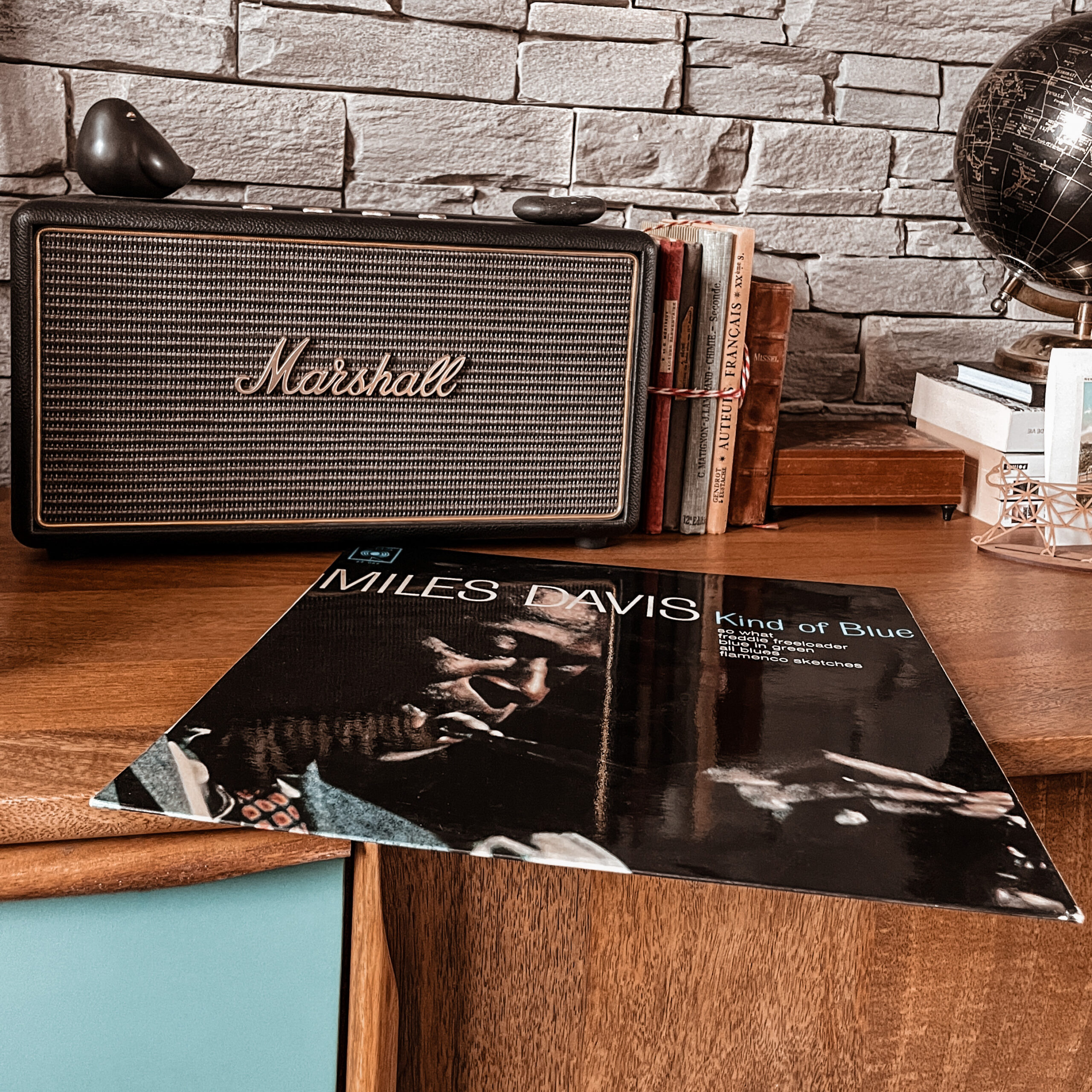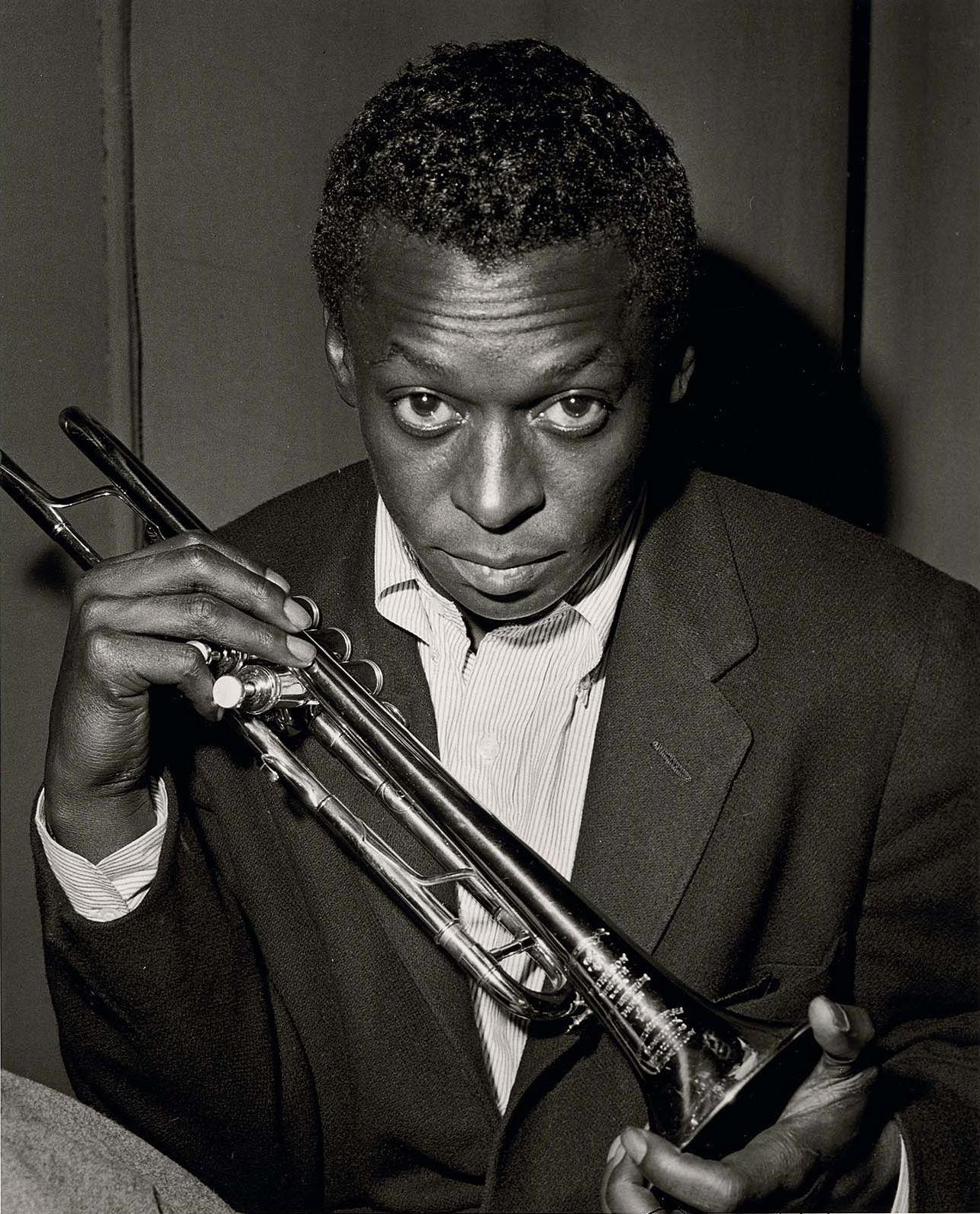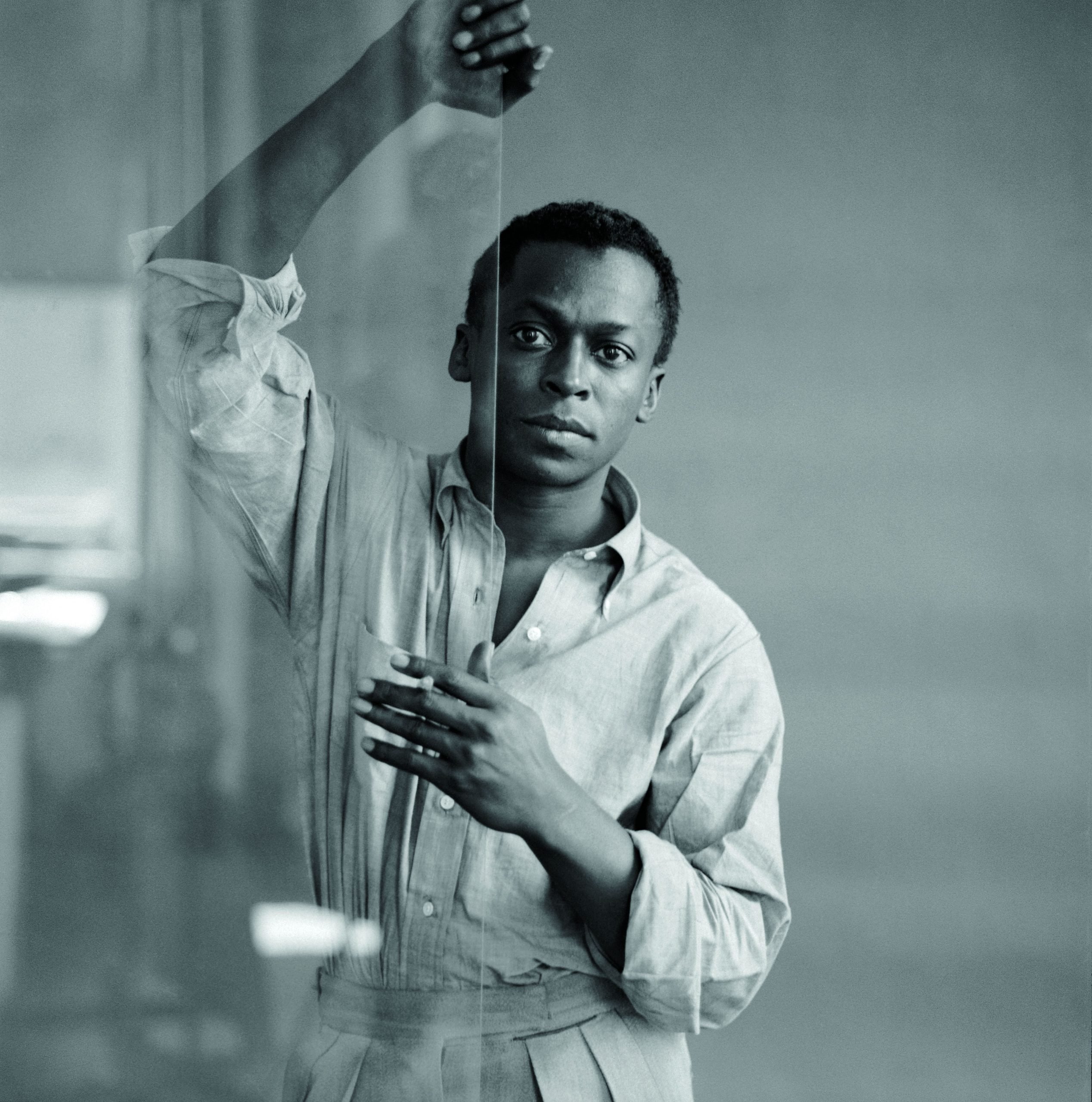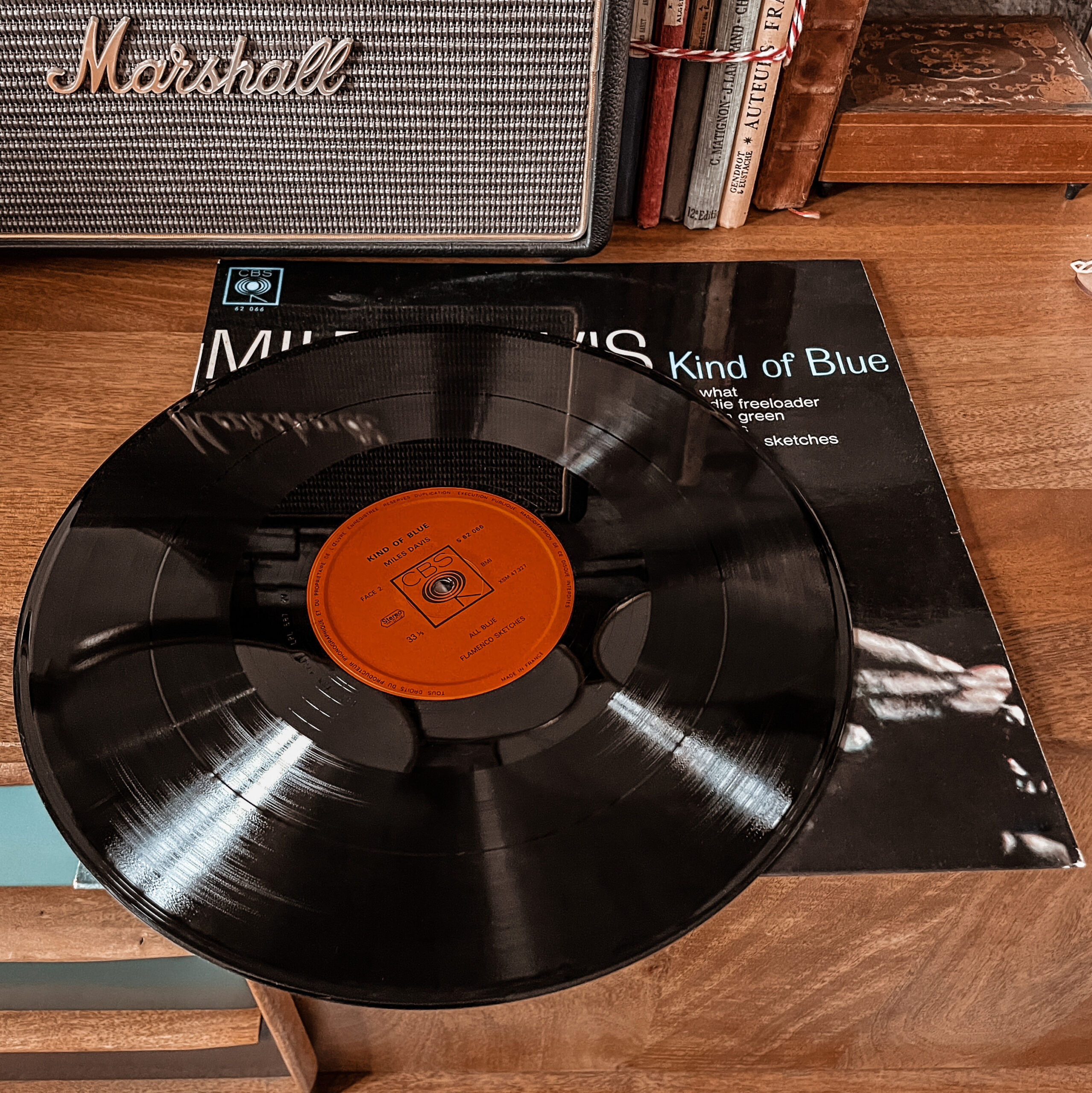Hello, young Padawan
Since the beautiful days are coming and it’s time to motivate your green plants or your garden if you have one, the other, or both, I thought that a little musical article came at the right time — if you don’t know that music pleases plants, I invite you to take a look at the article here.
You remember, in a previous post, I told you about John Coltrane and the fact that he had worked, and not only once, with the great Miles Davis. Well, today we will honor him by (re)discovering the first part of his life, and even better since we will talk about Kind of Blue, a mythical-sublime-grandiose album by Miles Davis, with, precisely, John Coltrane on tenor sax.
A great happiness for the ears and the plants. Let’s go
As usual, all the words in gray are links to click, and above all, to listen to. 🎵

Kind of Blue album by Miles Davis, from my personal collection, 1967 pressing.
Miles Davis, genius of Jazz
Born in 1926 in Alton, Illinois, and died at age 65 in 1991, this great artist began playing the trumpet at thirteen.
Coming from a wealthy family, thanks to a father who was a dental surgeon, his musical ear developed to the sound of the piano and the violin that his mother mastered. Her grandmother was an organ teacher in Arkansas, and her older sister, Dorothy, and younger brother, Vernon, also studied music.
The Davises moved to East Saint Louis, Illinois, where Miles’ father opened a dental practice. He was passionate about sports during his childhood, especially boxing, and his passion for music came very quickly as soon as he listened to the jazz radio program Harlem Rhythms. Around the age of 10, a friend of his father gave him his first trumpet, and he began to familiarize himself with this instrument. Then took lessons when he arrived at college with another friend of his father, who would help him find his style.
He turned professional in 1942, at just sixteen years old. Following an audition, he was hired as a trumpeter in Eddie Ranale’s orchestra, the Blue Devils (which play mainly blues, ed), where he discovered the organization of rehearsals and musical theory, which will learn a solid knowledge of the trade, but also will contribute to the many stylistic evolutions of his career. There he will meet Lester Young, an idol of saxophonists, who will become one of his models.
In parallel with his studies at the Juilliard School, where he learned the piano, Miles began the first phase of his career in the bebop style, where he met many encounters, notably at Minton’s, where he accompanied Billie Holiday at the saxophonist Coleman Hawkins’ orchestra. About this period, he said, “I could learn more in one night at Minton’s than in two years of study at the Juilliard School.”
His career began to take off after integrating Charlie Parker’s quintet, brilliant alto saxophonist, where he stayed for three years. He recorded a few months later his first personal composition,« Donna Lee », which will catch the attention of Gil Evans, a famous arranger, composer, and conductor. In the fall of 1946, Charlie Parker was hospitalized, and Miles found himself out of work. In the spring of 1947, after years of resistance to the bad habits of the saxophonist and his entourage, he plunged into cocaine and heroin.
Then comes the period of cool jazz. In the summer of 1948, Miles Davis collaborated with the arranger Gil Evans to participate in this new form of jazz. Based in New York, he founded a new group, a nonette, whose music was based mainly on arrangements and performed for the first time in public in 1948, opening for Count Basie’s show at the Royal Roost in New York. York, under the title “Nonet by Miles Davis, arrangement by Gerry Mulligan, Gil Evans, and John Lewis.” This new slower music with neat arrangements breaks radically with the urgency of bebop.

Photocredit : Pinterest.
The nonette entered the studio in early 1949, in New York, for a series of three sessions that would change the face of jazz. In fifteen months and with many different musicians, the group recorded a dozen pieces, including the titles Godchild, Move, Budo, Jeru, Boplicity and Israel. Six of them were released on 78 rpm; the rest had to wait until the 1950s and the famous Birth of the Cool album, released long after the fact, to see the light of day. Cool jazz was born, but this new music took several years to establish itself among musicians and the public.
Also in 1949, Miles Davis made his first trip abroad to participate in the International Jazz Festival in Paris, Salle Pleyel, on May 8. When he led a group with the pianist Tadd Dameron, he met the Parisian intellectual and artistic elite of the time: Jean-Paul Sartre, Boris Vian, Pablo Picasso, and above all, Juliette Gréco, with whom he fell in love. For the trumpeter, France was at the time a much less racist country than the United States, and for the first time, he had the feeling, as he would say in his autobiography, “of being treated like a human being.”
Unfortunately, on his return to the United States, saddened by his separation from Juliette Gréco and melancholic about the Parisian artistic milieu, he plunged back into heroin, abandoned his wife, and his children, lost his money, his house was seized by a credit company, and he ends up in jail in Los Angeles.
In the following years, he recorded with many highly-rated artists, such as Charlie Parker, singers Sarah Vaughan and Billie Holiday, Jackie McLean, Philly Joe Jones, and Sonny Rollins. He also met a young saxophonist, our famous John Coltrane, with whom he briefly played at the Audubon Ballroom in Manhattan.
But despite his father’s involvement, who drives him home to East St Louis and even has him arrested by the police, he fails to get off drugs. After a difficult fight against his addiction to heroin on his father’s farm, he succeeded in detoxifying himself in February 1954 and immediately united a new sextet and started a new style that would become, after Bebop and Cool, the “third wave” of modern Jazz: hard bop. This new style is more energetic and harmonically more straightforward. Several founding pieces of hard bop will see the light of day on the album “Walkin‘”: in particular the eponymous track, but also Airegin (an anagram of Nigeria), Oleo et Doxy composed by Rollins on the album « Bags’ Groove ». This pivotal year transformed a gifted trumpet player into a genius jazzman.
In 1955, he founded the group which has since been considered his first great quintet, with John Coltrane on tenor saxophone, Red Garland on piano, Paul Chambers on double bass, and Philly Joe Jones on drums. The quintet would also become proof of Davis’ talent scouting abilities: all of its members were or would become valued leaders, the best known being John Coltrane, whose reputation would be equal to that of Miles, but we already know that from the article here, lol.
Despite the success, the atmosphere within the group is sometimes tense because Davis does not support Coltrane’s drug addiction. In April 1957, after the two men came to blows, the trumpeter fired Coltrane from the band. Thelonius Monk then invited the latter to join his orchestra. Freeing himself from his addiction, Coltrane plays with him for several months before finding Miles Davis.
In 1958, Miles Davis recorded Milestones; his quintet then became a sextet with the appearance of Julian Edwin “Cannonball” Adderley on alto saxophone. This album introduces the first elements of modal music. A few days later, he participated, under the direction of Adderley, in the legendary album Somethin’ Else, as a sideman. At the same time, he continued his collaboration with Gil Evans and created orchestral albums which would enjoy significant critical and commercial success: Miles Ahead (1957), Porgy and Bess (1958), and Sketches of Spain (1959-1960).
And in 1959, Miles Davis signed his masterpiece with Kind of Blue, an improvised album around frames he composed…

Photocredit : Tom Palumbo, 1956.
Kind of Blue, a legendary album
Kind of Blue was released on August 17, 1959. The recordings are made with the sextet of Miles Davis, composed of saxophonists John Coltrane and Julian “Cannonball” Adderley, pianists Bill Evans and Wynton Kelly, drummer Jimmy Cobb and double bass player Paul Chambers.
The five titles were recorded in two sessions at Columbia’s 30th Street Studio located in New York. The titles that make up Side 1 of the LP (So What, Freddie Freeloader, and Blue in Green) are recorded during the first session on March 2, 1959. The two other titles present on Side 2 (Flamenco Sketches, and All Blues) are recorded on April 22.
Kind of blue Kind is composed as a series of “modal sketches,” in which each musician has been given a set of scales that indicate the main characteristics of improvisation and style. This style contrasts with traditional composition methods, consisting of providing musicians with complete scores or a chord progression, as is often the case with improvisational jazz.
Although the number of sales has been discussed, Kind of Blue has been described by many composers not only as Miles Davis’ best-selling album but as the best-selling jazz record of all time. On October 7, 2008, the Recording Industry Association of America certified its sales four platinum (over 4 million units).
Kind of Blue is considered by many critics the best jazz album, Miles Davis’ masterpiece, and one of the greatest ever. Rolling Stone magazine even ranked it twelfth in its list of the 500 greatest albums of all time. Miles Davis marked the history of jazz and 20th-century music in general, and this album will remain legendary.
And that’s it for today. Miles Davis is definitely one of the greatest jazz artists of all time, if not the greatest, according to the soul and the tastes of each.
Failing to have made you discover this magnificent artist, I hope to have given you the desire to listen to him again and this sublime album, now a great jazz classic.
Small off-topic bonuses, while doing my research, I came across this recording of Davis and Coltrane at the Olympia in Paris, in 1960, and then on a little Coltrane-Davis mix, because we are worth it, that you can listen here. A pure happiness !
And as for me, I wish you a good weekend, and see you on Friday!
XO 🎺
Sources: From the Vaults, Britanica, Wikipedia, Wikipedia, The guardian, Miles, the Autobiography – ed. The National Bestseller.

Kind of Blue album by Miles Davis, from my personal collection, 1967 pressing.
